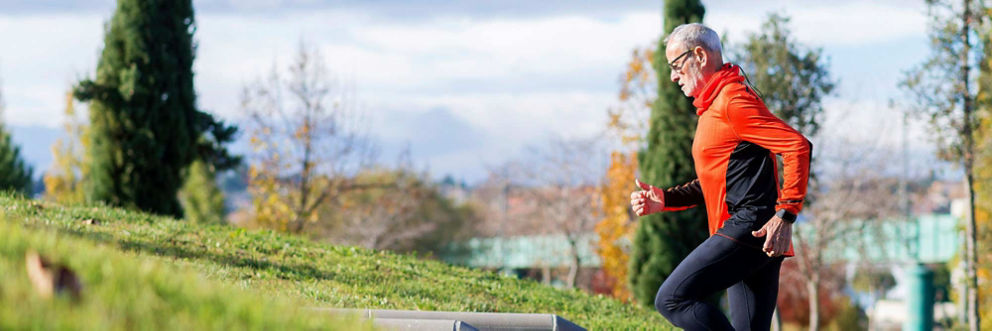Cardiac rehabilitation
Cardiac rehabilitation in Minnesota and western Wisconsin
After a heart attack or heart surgery we work with you to create a recovery plan that helps you transition back to the life you love.
Cardiac rehabilitation is a program designed to help people recover from heart conditions or surgeries and is centered on exercise and education. We also offer rehabilitation for those recovering from peripheral artery disease (PAD).
Our cardiologist-led programs can help you maintain or improve your heart health with confidence. Our cardiologists work closely with registered nurses, exercise physiologists, occupational therapists and your primary care doctor to make sure you’re supported every step of the way as part of our personalized cardiac rehabilitation program.
Heart conditions we treat
Your cardiologist might recommend cardiac rehabilitation if you’re recovering from any of the following procedures or conditions:
- Stent
- Angioplasty
- Coronary artery bypass surgery
- Heart attack (myocardial infarction)
- Cardiac valve repair or replacement
- Congestive heart failure
- Stable angina
- Heart transplant
- Cardiomyopathy
- Cardiac arrest
- Irregular heartbeat
- Coronary artery disease
- Peripheral artery disease
Phases of cardiac rehabilitation
Cardiac rehabilitation is broken into three different phases. Phase one is inpatient rehabilitation for patients who are still in the hospital. Phase two is outpatient rehabilitation. It’s for patients who have left the hospital and are transitioning back to their daily life. Phase three is an exercise program for maintenance. This phase is more independent, but it’s still supervised by a member of our team. Here’s what to expect in each phase of cardiac rehabilitation.
Phase one: inpatient cardiac rehabilitation
The first phase of cardiac rehabilitation focuses on education and exercise after a heart event.
During inpatient cardiac rehabilitation, you’ll learn about risk factor modification (lifestyle changes that can lower your risk of future heart events), energy conservation, stress reduction techniques, surgical precautions to take regarding activity, signs of overexertion and how to return to your everyday activities.
Phase one exercise focuses on progression, or improving your performance as you go. You’ll follow exercise guidelines, learn self-assessment skills and start an exercise program you can do at home. We’ll monitor how your heart rate and blood pressure respond to activity every day prior to leaving the hospital. At discharge, therapists may recommend homecare therapy or phase two cardiac rehabilitation if appropriate.
Phase two: outpatient cardiac rehabilitation
Phase two cardiac rehabilitation concentrates on improving functional outcomes and preventing future cardiac problems. In phase two, you’ll receive education and individualized exercise instruction from our trained staff. You’ll participate in monitored group exercise sessions two to three times per week, typically for six to 12 weeks.
During the exercise program, you’ll participate in progressive conditioning that includes aerobic training, strength training and stretches for your lower body. You might use a variety of exercise equipment, including treadmills, stationary bikes, recumbent bikes, Nu Steps, recumbent elliptical machines, standard elliptical machines and free weights.
The exercise program also includes a cardiac evaluation. During the evaluation, we’ll measure your heart rate and blood pressure. We’ll also perform electrocardiograms (EKG) at rest and with exertion.
In outpatient cardiac rehabilitation, you’ll learn about a variety of topics, including cardiac symptoms, heart anatomy and physiology, diet, risk factor modification, medications, activity selection, self-assessment skills and stress reduction techniques.
Patients need a doctor’s order to participate in phase two rehab.
Phase three: maintenance program
Your rehabilitation plan may include a more independent phase of rehabilitation in which you’ll continue exercising in a safe environment. Programs vary by site, but assistance from trained staff is available when needed. This program isn’t covered by insurance.
Peripheral artery disease rehabilitation
Peripheral artery disease (PAD) occurs when plaque buildup in your blood vessels reduces blood flow to the limbs (usually the legs). This lack of blood flow causes symptoms when walking, such as leg discomfort. PAD is also a sign of more widespread blockage of arteries, a condition that may also reduce blood flow to the heart and brain.
PAD rehabilitation is a comprehensive program consisting of education and supervised exercise training to improve functional capacity, decrease symptoms and reduce your risk of future heart events. Patients typically attend rehab sessions three times per week for 12 weeks. At these sessions, you’ll get instruction and support, including coaching and training in exercise, smoking cessation, risk factor reduction and nutrition.
Patients need a doctor’s order to participate in the program.
